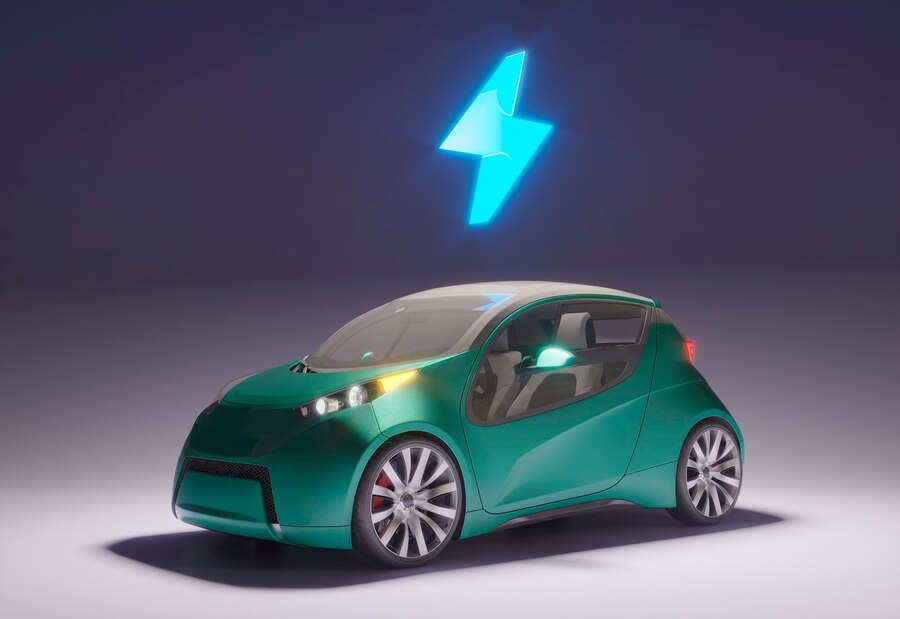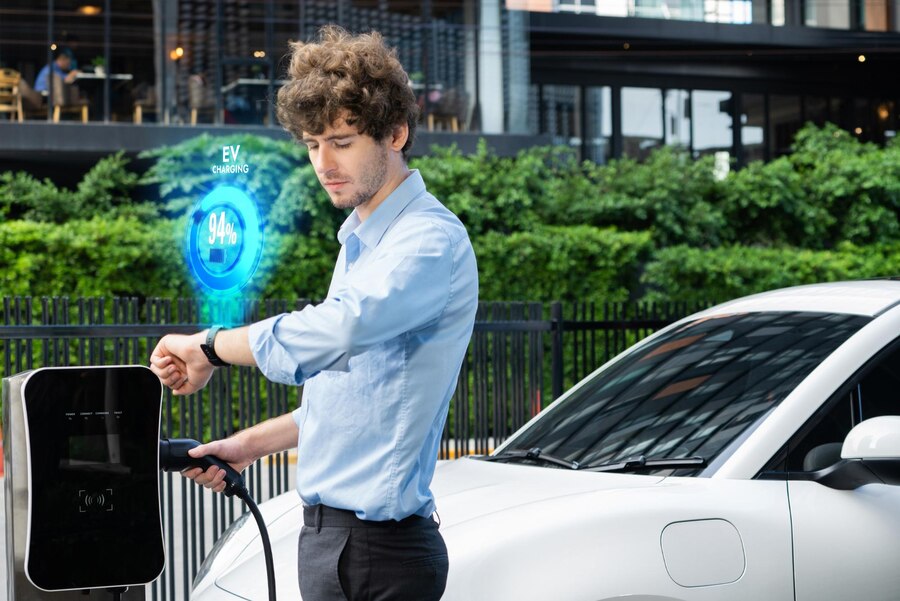introduction
The automotive landscape is undergoing a profound transformation, and at the heart of this revolution is the electric vehicle (EV)—a game-changing innovation that promises to reshape the way we think about transportation. The phrase “No Fuel, No Fuss, Just Flow” encapsulates the essence of this shift: a move away from traditional fuel-based vehicles toward a cleaner, quieter, and more efficient future. No longer do we have to worry about fluctuating fuel prices, long refueling stops, or the environmental damage caused by burning fossil fuels. With electric vehicles, the future of driving is all about simplicity, efficiency, and seamless experiences.

No Fuel: The End of Fossil Fuels
For decades, the internal combustion engine (ICE) has dominated the roads, relying on gasoline or diesel to power vehicles. But this dependence on fossil fuels has come at a significant cost—both to the environment and our wallets. Rising fuel prices, oil dependence, and greenhouse gas emissions have led many to question the long-term sustainability of traditional cars.
Electric Vehicles: A Breath of Fresh Air
Electric vehicles represent the future of transportation because they eliminate the need for fuel altogether. Instead of relying on gasoline or diesel, EVs run on electricity, which can be sourced from clean, renewable sources like solar, wind, or hydropower. This shift to electricity means that:No more trips to the gas station: With an electric vehicle, you simply plug in your car at home, at work, or at a public charging station, and it’s ready to go. There’s no need to constantly monitor fuel levels or worry about finding a gas station during long drives.Lower operational costs: Charging an EV is much cheaper than filling up a gas tank, especially if you use home charging with renewable energy sources. The average cost per mile for an electric vehicle is significantly lower than that of a gasoline-powered vehicle.
Cleaner energy: EVs contribute to reducing air pollution and greenhouse gas emissions, particularly when the electricity used to charge them comes from renewable sources. This transition is a critical step in combating climate change.The elimination of fuel-related worries marks a new chapter in the automotive world, where the simplicity of an electric car leads to lower stress and less hassle for drivers.
No Fuss: The Convenience and Efficiency of Electric Vehicles
The driving experience has never been simpler or more intuitive than it is with electric vehicles. Gone are the days of worrying about engine maintenance, oil changes, or complex fuel systems. With an EV, the driving experience is streamlined and straightforward.
Simplicity at Every Turn
Fewer Moving Parts: Electric vehicles have far fewer moving parts compared to traditional cars, which means there is less that can go wrong. Without the need for complex transmission systems, exhaust systems, and internal combustion engines, the likelihood of breakdowns and the need for repairs is significantly reduced.
Minimal Maintenance: Electric motors require far less maintenance than internal combustion engines. With fewer parts that wear out over time, EV owners can expect to spend less time and money on maintenance. No oil changes, no spark plugs to replace, and fewer components to worry about.
Regenerative Braking: Many electric vehicles come with regenerative braking, which converts kinetic energy back into stored energy in the battery. This feature not only increases driving efficiency but also reduces wear and tear on brake pads, meaning less frequent replacements.
Intuitive Charging: Charging an electric vehicle is simple and convenient. With the growing network of fast-charging stations and home charging solutions, recharging your vehicle has never been easier. Plus, many EVs now offer smart charging capabilities, allowing you to schedule charges during off-peak hours to save on energy costs.
Just Flow: The Effortless Drive of Electric Vehicles
One of the most exciting aspects of electric vehicles is the seamless driving experience they provide. With electric powertrains, drivers can enjoy a ride that is both smooth and exhilarating, offering a completely different driving experience compared to traditional vehicles.
The Smoothness of Electric Power
Instant Torque: Electric vehicles are known for their instant torque, meaning they accelerate smoothly and quickly without the traditional delays or gear shifts of a gasoline engine. Whether you’re merging onto the highway or cruising through city streets, the power is immediate, and the drive feels effortless.
Quiet and Comfortable: EVs are known for their silent operation. Without the noise of an internal combustion engine, the ride is incredibly quiet and peaceful. This creates a more comfortable and relaxing experience for both drivers and passengers.
Advanced Technology: Electric vehicles often come with cutting-edge features such as autonomous driving capabilities, smart navigation, and AI-based driver assistance systems. These technologies make driving even more effortless and intuitive, allowing for a smoother, more connected ride.
Regenerative Braking: As mentioned earlier, regenerative braking not only increases efficiency but also helps drivers feel more in control of their vehicle. The ability to “coast” and slow down without constantly applying the brakes makes for a smoother and more fluid driving experience.The essence of the “Just Flow” experience is that driving becomes something you enjoy rather than something you have to endure. It’s about connecting with your vehicle in a way that feels natural, intuitive, and effortless—creating a truly flowing experience on the road.
The Road Ahead: The Future of Electric Mobility
While we’ve made significant strides in the adoption of electric vehicles, the journey is far from over. As technology continues to improve, the electric car market is poised to grow even further, making electric mobility an even more integral part of our everyday lives.
Future Innovations to Look Forward To
Longer Battery Life: As battery technology continues to evolve, we can expect even longer driving ranges and faster charging times. Innovations like solid-state batteries could bring about dramatic improvements in energy density, efficiency, and safety.
Widespread Charging Infrastructure: Charging stations are becoming more accessible and abundant, making long-distance travel more feasible and reducing the concerns around “range anxiety.” New charging technologies, like wireless charging, could also reduce the hassle of plugging in.
Autonomous Electric Vehicles: The future of EVs also lies in autonomous driving. Self-driving electric cars could revolutionize the way we think about transportation, offering a fully hands-free, effortless driving experience.
Sustainable Manufacturing: As the demand for EVs increases, manufacturers are focusing on making the production process more sustainable. From using recycled materials to developing eco-friendly batteries, the entire lifecycle of electric vehicles will become more sustainable.
As we move forward into a world dominated by electric mobility, the mantra of “No Fuel, No Fuss, Just Flow” will become a reality for an increasing number of people. The future of transportation is clean, convenient, and smooth—and it’s within our reach.


